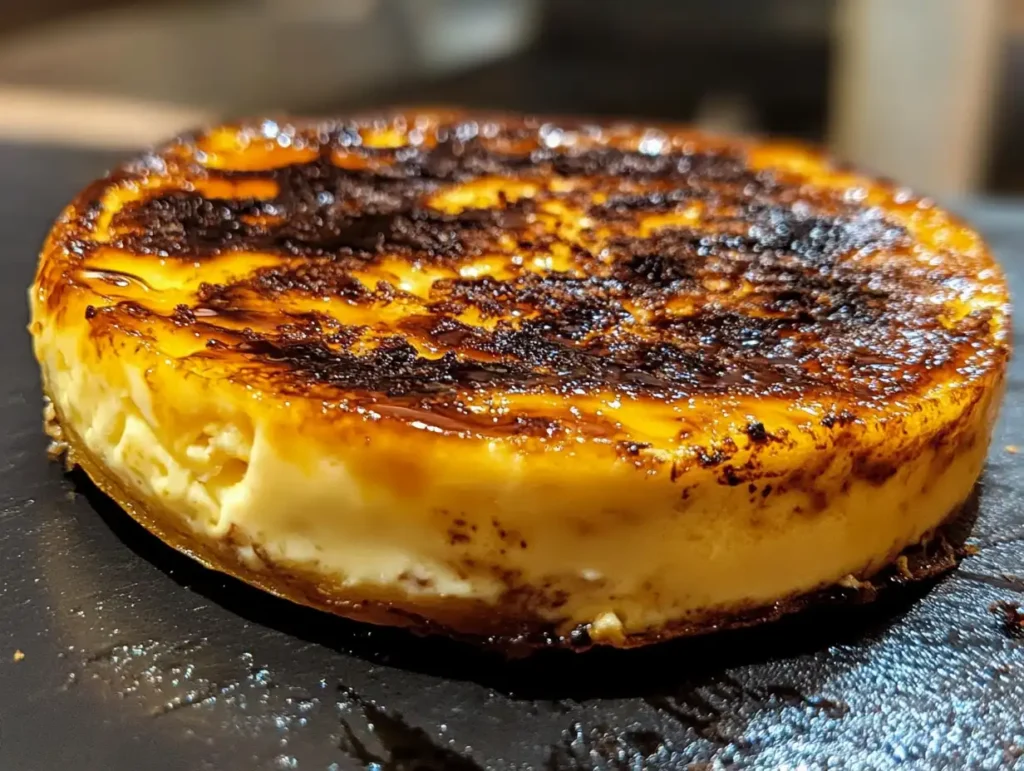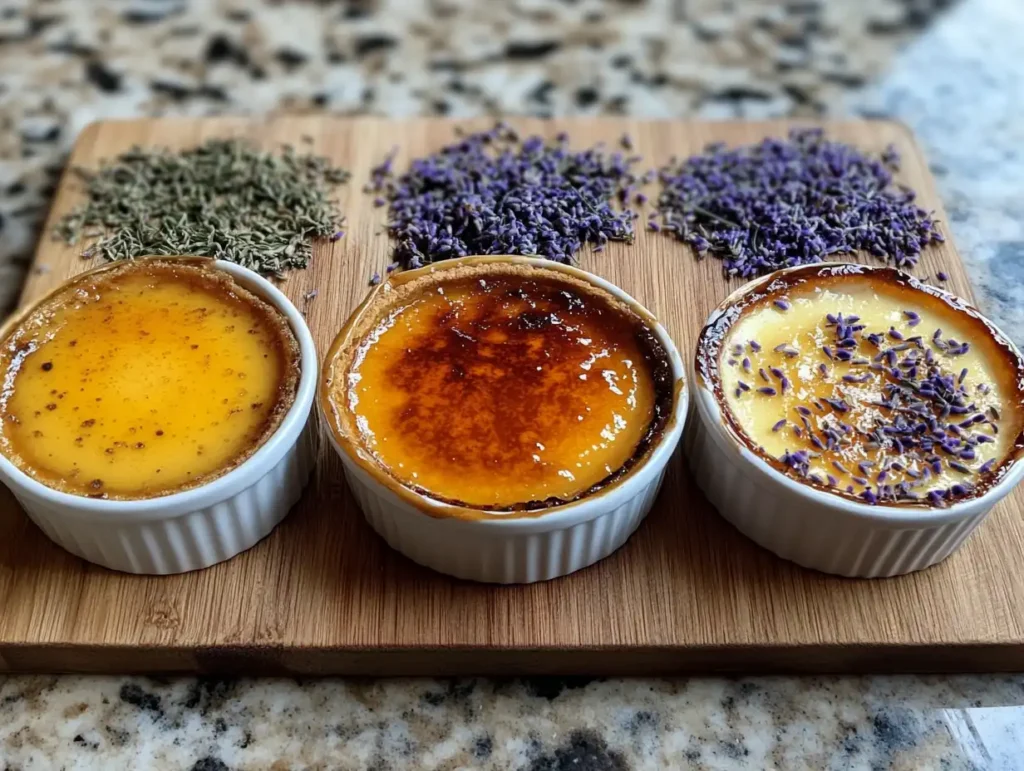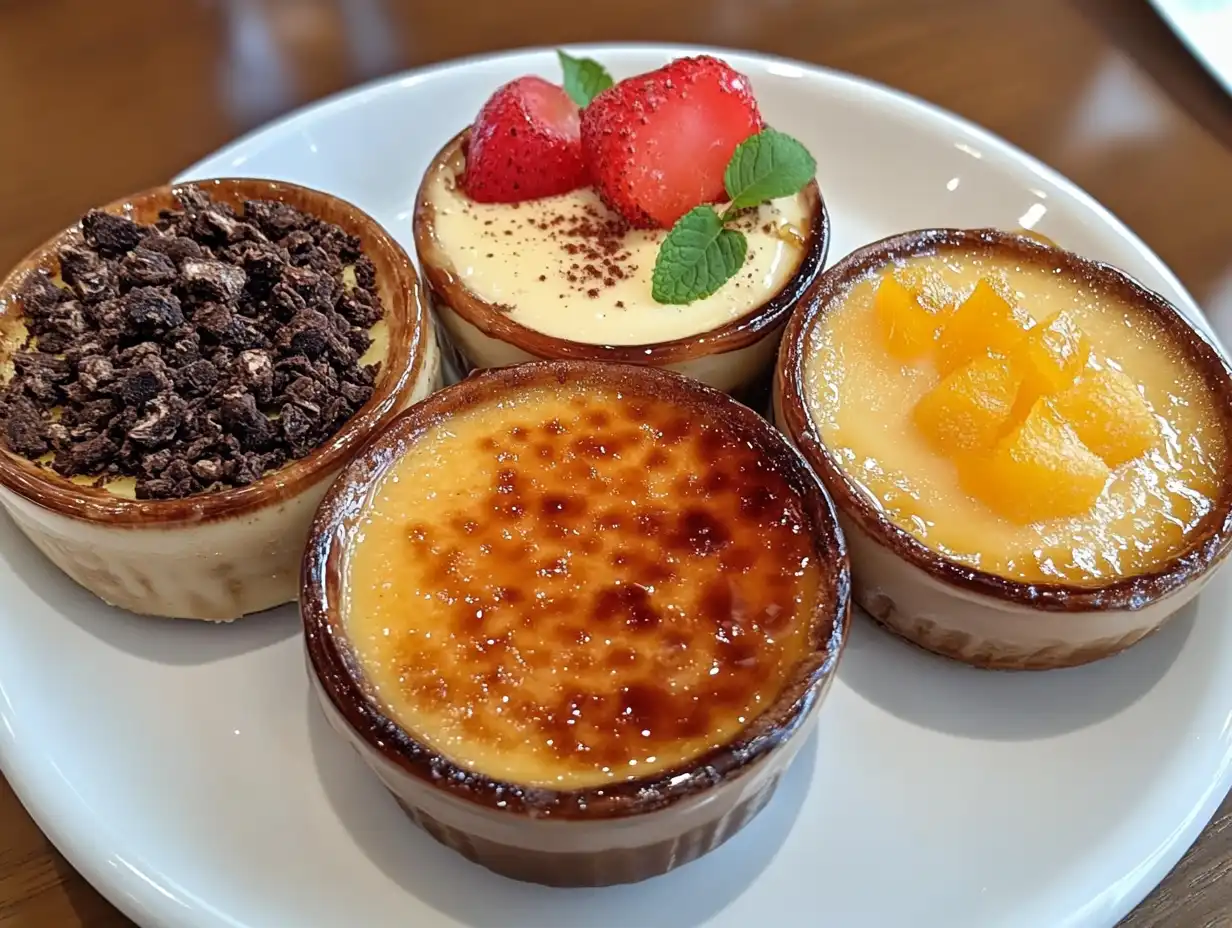Introduction to Crème Brûlée
Crème brûlée, a classic French dessert, is the epitome of elegance and simplicity. Known for its luscious custard base and crisp caramelized sugar topping, this dessert has been gracing dining tables for centuries. The name “crème brûlée” translates to “burnt cream,” referring to the signature sugar crust achieved by torching or broiling.
Though it appears straightforward, creating the perfect crème brûlée requires attention to detail, quality ingredients, and the right techniques. The secret to its success lies in the balance of a silky-smooth custard and a perfectly caramelized top. In this guide, we will explore everything you need to know to master this iconic dessert, including the key components, essential techniques, and common mistakes to avoid.
The Key Components of Crème Brûlée
At its core, crème brûlée relies on just a few key ingredients: heavy cream, egg yolks, sugar, and vanilla. However, the quality of these ingredients and the way they are handled make all the difference in achieving the perfect dessert.
The Role of Heavy Cream and Vanilla
Heavy cream serves as the foundation of crème brûlée, giving it a rich and velvety texture. The high fat content in heavy cream ensures that the custard remains soft and luscious without curdling. For best results, always use full-fat cream rather than lower-fat alternatives like half-and-half or milk, as these can result in a thinner, less satisfying custard.
Vanilla is the key flavoring in crème brûlée. Traditional recipes use a vanilla bean pod, which imparts a deep, aromatic flavor that is difficult to replicate with artificial flavorings. To use a vanilla bean, simply split the pod lengthwise and scrape the seeds into the cream before heating. The tiny black specks of vanilla seeds not only enhance the flavor but also add a sophisticated touch to the custard. If a vanilla bean is unavailable, high-quality pure vanilla extract can be used as a substitute.
Egg Yolks: The Essential Ingredient
Egg yolks are crucial for the structure and texture of the custard. When combined with sugar and cream, the yolks thicken the mixture as it cooks, creating a smooth and creamy consistency. Using only yolks (and not whole eggs) prevents the custard from becoming too firm or rubbery.
The key to using egg yolks effectively is gentle cooking. Overcooking the yolks will cause the custard to curdle and turn grainy. Proper tempering—gradually adding warm cream to the yolks while whisking—ensures a smooth blend without cooking the eggs prematurely.
Sugar: Sweetness and the Caramelized Top
Sugar plays two roles in crème brûlée: it sweetens the custard and forms the iconic caramelized sugar crust. Granulated or caster sugar is ideal for both purposes.
- In the custard: Sugar is whisked into the egg yolks to sweeten the mixture evenly.
- For the topping: A fine layer of sugar is sprinkled on top of the chilled custard, then caramelized using a culinary torch or broiler. The result is a crisp, golden-brown crust that cracks beautifully when tapped with a spoon.
Techniques for Achieving the Perfect Custard
The custard is the heart of crème brûlée. Achieving the perfect silky-smooth consistency requires precise techniques and careful attention to detail.
Proper Mixing of Ingredients
To begin, whisk the egg yolks and sugar together until the mixture becomes pale and slightly thickened. This step dissolves the sugar and incorporates air, creating a smooth base for the custard.
The cream should be heated gently, just until it begins to steam but not boil. Boiling the cream can alter its texture and result in scrambled eggs when combined with the yolks. Tempering is the process of slowly incorporating the warm cream into the egg mixture while whisking constantly. This prevents the eggs from cooking too quickly.
Baking the Custard – Bain-Marie Method
The custard must be cooked gently and evenly to achieve the ideal creamy texture. The best way to do this is through a water bath, or “bain-marie.”
- Place the ramekins filled with custard in a large baking dish.
- Pour hot water into the baking dish until it reaches halfway up the sides of the ramekins.
- Bake at a low temperature (300°F or 150°C) until the custard is set but still slightly jiggly in the center.
The water bath provides even, gentle heat, preventing the custard from curdling or overcooking. Skipping this step may result in a custard that is unevenly cooked or grainy.
How to Avoid Overcooking the Custard
Overcooking is one of the most common mistakes when making crème brûlée. To avoid this:
- Remove the custard from the oven as soon as the edges are set but the center still wobbles slightly. It will continue to set as it cools.
- Avoid cooking the custard at high temperatures, as this can cause the eggs to curdle.
- Use an instant-read thermometer to ensure the custard reaches around 170–175°F (77–80°C).
The Secret to the Caramelized Sugar Topping
The crunchy sugar topping is the hallmark of crème brûlée. Achieving the perfect caramelized crust requires the right type of sugar, tools, and technique.
Choosing the Right Sugar
Fine granulated sugar or caster sugar is ideal for the topping because it melts quickly and evenly. Coarser sugars may take longer to caramelize and can create an uneven crust.
Using a Culinary Torch vs Broiler
There are two main methods for caramelizing the sugar topping:
- Culinary Torch: A kitchen torch is the preferred method because it provides better control over the heat. By moving the torch in circular motions, you can evenly melt and caramelize the sugar without burning it.
- Oven Broiler: If you don’t have a torch, you can use an oven broiler. Place the ramekins under the broiler and watch carefully as the sugar melts. The downside of this method is that the custard may warm up too much.
Timing and Technique for Caramelizing
To achieve the best results:
- Chill the custard completely before caramelizing the sugar. The cold custard prevents the sugar from sinking into the surface.
- Sprinkle an even layer of sugar over the custard. Shake the ramekin gently to distribute the sugar evenly.
- Use the torch or broiler to melt the sugar until it bubbles and turns golden brown. Allow the caramelized topping to cool for 1–2 minutes, forming a hard, crackly crust.
Common Mistakes to Avoid When Making Crème Brûlée

Even experienced bakers can encounter issues when making crème brûlée. Here are some common mistakes and tips to avoid them:
Preventing a Grainy Texture
A grainy custard is usually the result of overcooked eggs. To avoid this:
- Use a water bath to ensure gentle, even heat.
- Monitor the cooking time and temperature carefully.
- Strain the custard through a fine mesh sieve before baking to remove any curdled bits.
Cracking the Sugar Topping Properly
For the perfect “crack” when tapping the sugar crust:
- Use an even layer of sugar (not too thick or thin).
- Allow the caramelized sugar to cool and harden for a minute before serving.
If the sugar topping is too thin, it won’t form a proper crust. If it’s too thick, it may be difficult to crack.
Variations of the Classic Crème Brûlée

While traditional crème brûlée is flavored with vanilla, there are countless variations to explore.
Flavor Infusions
- Coffee Crème Brûlée: Infuse the cream with freshly brewed coffee or espresso.
- Citrus Crème Brûlée: Add zest from oranges, lemons, or limes to the cream for a refreshing twist.
- Lavender Crème Brûlée: Infuse the cream with dried lavender for a floral, aromatic flavor.
Vegan and Dairy-Free Alternatives
For a vegan version of crème brûlée:
- Replace heavy cream with full-fat coconut milk or almond milk.
- Use cornstarch or agar-agar as a thickener instead of egg yolks.
- Caramelize the sugar topping as usual for the same satisfying crunch.
FAQs: Frequently Asked Questions About Crème Brûlée
1. Why is my crème brûlée grainy?
A grainy texture occurs when the custard is overcooked. Use a water bath, cook at a low temperature, and remove the custard when the center is still slightly wobbly.
2. How do I get a perfect sugar crust?
Use superfine sugar and a culinary torch. Chill the custard before adding the sugar, and caramelize it evenly.
3. Can I make crème brûlée ahead of time?
Yes! Prepare and chill the custard up to 2 days in advance. Add and caramelize the sugar topping just before serving.
4. What is the best size ramekin for crème brûlée?
Ramekins that are 4–6 ounces in capacity with a shallow, wide surface area work best for even cooking and caramelizing.
5. Can I freeze crème brûlée?
While you can freeze the custard base, freezing may alter the texture. Thaw it completely in the refrigerator before serving and caramelize the sugar topping fresh.
Explore More Dessert Tips and Recipes
If you’re intrigued by the What is the Secret to Crème Brûlée, here are some additional resources and recipes to elevate your dessert-making skills:
- Vanilla Bean Paste: Everything You Need to Know – Discover the magic of vanilla bean paste, a must-have ingredient for perfect Crème Brûlée.
- Lemon Blueberry Cookies: A Delightful Treat for Every Occasion – A zesty and sweet cookie recipe to satisfy your dessert cravings.
- Sourdough Banana Muffins: A Delicious and Healthy Recipe – A delightful baked treat to complement your dessert table.
These tips and recipes will help you create flawless desserts and inspire more sweet culinary creations!
Conclusion
The secret to mastering crème brûlée lies in high-quality ingredients, precise techniques, and attention to detail. From the smooth, creamy custard to the crisp, caramelized sugar topping, every step contributes to the perfect bite. By avoiding common mistakes and experimenting with flavors, you can confidently create this timeless dessert at home.
Whether you stick to the classic vanilla version or try a creative twist, crème brûlée is a dessert that never fails to impress. With practice and patience, you’ll unlock the secret to this elegant treat.
